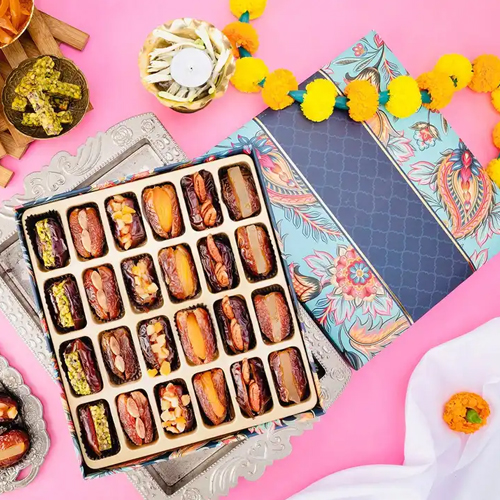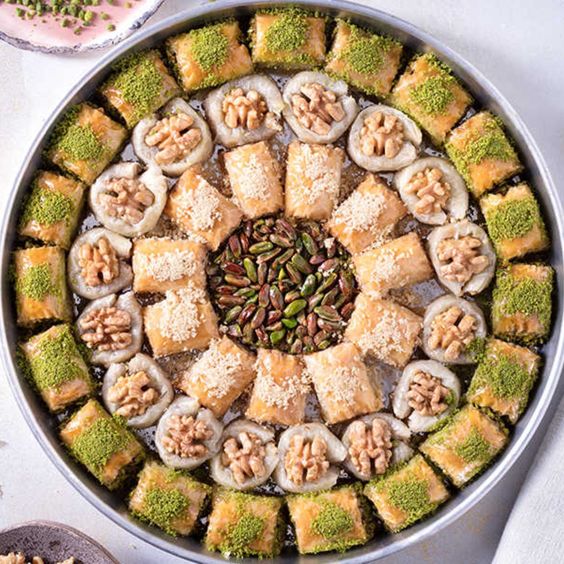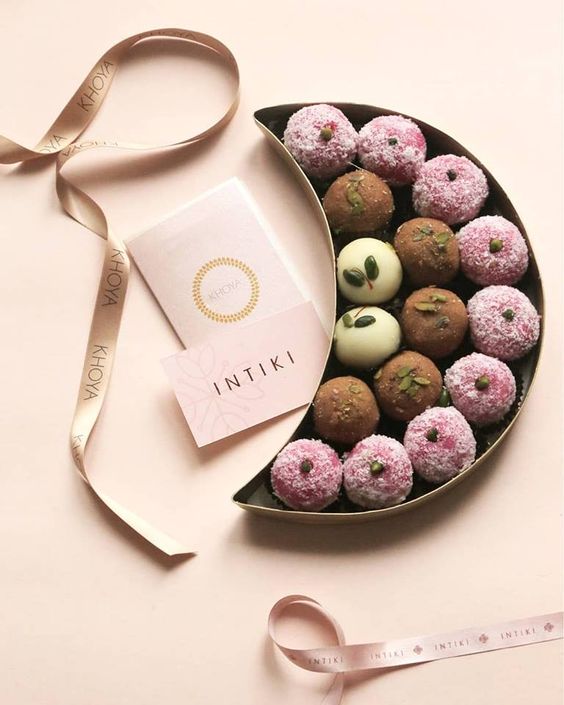Sealing technology and equipment
Sealing refers to various sealing processes performed after packaging wholesale baklava packaging boxes the product with packaging materials or packaging containers to ensure that the contents remain in the package and avoid contamination during circulation, transportation, storage and sales. It has a broad meaning and is also called sealing, sealing, or sealing. After completing the packaging of materials wholesale baklava packaging boxes in the container, the machine that seals the container is called sealing equipment. Different packaging containers have different sealing methods, and the types of sealing types and sealing equipment are diversified. There are many types of sealing methods, materials and components used in the sealing and packaging process. which are divided into the following types according to the presence or absence of sealing materials and different sealing methods.
(1) No sealing material , there are hot-pressed sealing, welding sealing, embossed sealing, folding sealing and plug-in sealing.
(2) There are sealing materials , including rolling sealing, crimping sealing, pressure sealing and twist sealing.
(3) There are auxiliary sealing materials . This type of sealing includes ligation sealing and tape sealing.
In daily life, these sealing products can be seen everywhere, such as glass bottles of beer, soda and other carbonated drinks. They are mainly pressure sealing products, which are commonly called capping machines. Bottled water and pharmaceutical products are most commonly sealed by screw capping, and are customarily called capping machines. Canned foods in tinplate containers are sealed by crimping and sealing, which is customarily called a can sealing machine. I will not list them one by one. They all belong to the category of packaging equipment.
1. Functions and types of adhesives
The method of sealing packaging products using adhesives is called an adhesive process. Its advantages are simple process, high productivity, high bonding strength, uniform stress distribution, good sealing, wide adaptability, and increased thermal insulation and insulation properties. It is widely used in the packaging industry for bonding various materials such as paper, cloth, wood, plastic, and metal. It plays an important role in the processes of sealing, composite material manufacturing, box sealing, stripping, and labeling.
There are many types of adhesives with complex ingredients, and many natural and synthetic materials can be used as adhesives. According to the nature of the base material of the adhesive, it can be divided into inorganic adhesives and organic adhesives; according to the physical form of the adhesive, it can be divided into three categories: water-soluble type, solvent type and hot-melt type; according to whether the adhesive is heated when working, it is divided into cold glue and hot melt adhesive.
2. Cold glue bonding does not require heating and is carried out at room temperature.
There are water-soluble adhesives and solvent-based adhesives. Solvent-based adhesives are only suitable for 120-degree melt bonding that does not use waterline fusion machines due to restrictions on species, safety, environmental protection regulations, and production safety. In the case of adhesives, water-soluble adhesives are mainly used in production. Dongji type Xinheli has been used the longest in packaging and has the largest dosage. Its advantages are easy operation, low safety cost and high bonding strength. It can be divided into two categories: natural water-soluble adhesives and synthetic water-soluble adhesives. It is a natural water-based adhesive with low energy saving and high strength. Fu type warning. The main purpose is to seal cartons and paper. It is made of fixed powder paper tubes and paper bags. It is made of raw flour or vegetables. In the production process of Wabo cardboard, avoid using starch. Adhesive. Its advantages are that it is easy to form and stick to metal cans, can bond paper well, and has good heat resistance. The disadvantage is that the adhesion deviation is relatively small.
Poor adhesion to plastics and coatings, poor water resistance. The fusion material of the material and the killing layer, such as animal glue, can be used as the main component of the rewetting compound of the sealing tape, and as the adhesive of the sealing tape: such as dry glue, it is mainly used as a sticker for beer bottles. Label adhesive, because it can meet the cold water immersion resistance required for beer bottle label bags, and can be washed away with alkaline water after the bottle is recycled. It can also be used to make the chemical compound used for Daizhi foil and natural compounding, such as Natural rubber emulsion, which is a white emulsion extracted from rubber trees, is mainly used in packaging as the main component of the adhesive for polyethylene and paper composites in multi-layer bag structures. It can self-close by pressure, so it is often used for self-sealing candies. Adhesive for wrapping, pressure sealing boxes and pressure sealing paper bags.
Synthetic water-soluble adhesives.
Most of these adhesives are resin emulsions, especially polyvinyl acetate emulsion-stable suspension of vinyl acid particles in water. This type of adhesive is most widely used in wholesale baklava packaging boxes, such as for forming, sealing or labeling boxes, boxes, tubes, bags and bottles. Due to its series of excellent properties, it has largely replaced natural adhesives.
Cold glue bonding process
The bonding process of cold glue adhesive can be operated manually or with coating equipment. The main bonding operation procedures are: coating, pressing and curing (volatilization). Curing is the process in which the water or organic solvent that dissolves the cold glue evaporates until the adhesive itself solidifies. After the adhesive is applied to the adherend, it needs to remain in the bonded state for a long time until it solidifies. Use a brush or spray gun when applying by hand. When coating mechanical equipment, there are roughly three working methods: D roller coating method. the cold glue in the container is spread by rotating rollers. There are two ways to adjust the glue thickness: when the roller is smooth cylindrical, it can be adjusted through the gap between the wheel surface and the scraper; when the roller surface has grooves, it depends on the depth of the groove. The roller coating method can use adhesives at room temperature. The equipment structure is relatively simple and is widely used in folding carton pasting machines. Because it can fully apply glue to the folds of the carton, the carton can be completely sealed even if the contents are in powder form. However, the equipment needs to be cleaned every day, and the adhesive loss is large; if organic solutions are used, environmental protection issues need to be considered.
3. Nozzle coating method. There are two ways to spray glue with a nozzle.
The method of supplying adhesive to the nozzle can be a pressure tank or a pressure pump. When spraying glue in a non-contact manner, there is a certain distance between the nozzle and the object to be adhered, and a pressure pump with a higher spray pressure is mostly used. In addition, from the perspective of maintenance, for
For materials such as corrugated cardboard where paper wholesale baklava packaging boxes scraps tend to accumulate on the nozzle, the non-contact method is more appropriate. Compared with the roller coating method, the non-contact coating direction can be adjusted arbitrarily, and the equipment does not need to be cleaned every day; however, since the glue is sprayed through a small-diameter nozzle, there is a problem that the glue will dry out and block the nozzle. For this reason, some measures need to be taken Measures include placing the nozzle in a humid place or blowing moisture toward the end of the nozzle when the assembly line is stopped. In addition, some adhesives will accelerate the corrosion of metal nozzles, which should be considered when selecting them.
a Acid mist glue coating method. There is not much difference in the composition of the spray gluing and nozzle gluing systems. The difference is that dry gluing makes the cold glue spread in a linear shape, while spray gluing makes the cold glue spread in a mist shape, The reason is that the coating requires a large area. A good bonding effect can be obtained by applying a small amount of glue, and the lamination time can be shortened. The disadvantage is that the first line is blurry. Mostly used for sealing corrugated boxes 3. Hot melt adhesive bonding
There are three ways to adjust the pressure inside the cloth equipment operation or organic solvent room when the roller equipment is closed.
Hot melt adhesive is a solid adhesive based on thermoplastic polymers. Its bonding process is: melt adhesive, coating, pressing and solidification (cooling). The coating liquid is heated and melted glue, and solidification is the process of cooling the molten glue. different from cold
The glue liquid evaporates. Because the cooling time is much shorter than the evaporation time, it can adapt to the higher production speed of automatic packaging production lines. It is a very important adhesive in current packaging. There are three most commonly used hot melt adhesives. The first is ethylene-vinyl acetate copolymer (EVA), which can be combined with wax and tackifying resin to make a more useful adhesive. The function of wax is to reduce viscosity and control The curing speed, flexibility and heat resistance of the adhesive, the role of the tackifying resin is to control the viscosity and adhesion. The second type is a hot melt adhesive based on low molecular weight polyethylene, which is widely used for paper bonding, such as carton sealing and bag sealing. The third kind of adhesive based on amorphous polypropylene is used for laminating paper to produce water-resistant packaging materials or two-layer reinforced transportation packaging.
In addition, there are some hot melt adhesives that meet other special purposes. No matter what kind of hot melt adhesive they are, they all have one basic advantage in common, that is, they can be bonded by simply cooling. However, because they cure very quickly, poor adhesion often occurs where the hot melt solidifies without touching the wetted substrate, and their strength decreases rapidly when the temperature is increased. If properly formulated, they can be suitable for most wholesale baklava packaging boxes applications. , but not suitable for very hot filling operations or packaging for baking.
D roller gluing method. The method is simple, but the overall effect is poor.
Nozzle coating method.
The hot-melted glue is placed in the glue storage tube 6, and the glue storage tube is connected to the glue coating nozzle 7; the corrugated carton 10 is sent to the glue coating position by the conveyor belt 9, and the nozzle sprays the pressurized glue to form a glue on the carton piece. The glue layer 8 is folded, pressed and cooled to complete the bonding. Since the nozzle does not come into contact with the carton and the glue is sprayed out under pressure, the coating speed is fast and even. Among various bonding methods, it is the most widely used.
Flat glue coating method.
The hot-melted glue is stored in the glue storage tank 11. The glue-coated surface of the cardboard box piece 13 is downward and placed on the glue-coated flat plate 12. The glue-coated flat plate moves up and down, carrying the carton blank piece in the storage tank when it descends. Glue is applied in the glue tank, and then upwards through folding, pressing and cooling to complete the bonding. The glue-coating flat plate is engraved with empty slots that are suitable for the glue-coating parts of the carton blank, so that each glue-coated surface can be coated at one time, thereby improving efficiency. This method is mostly used for pasting cartons.
Post time: Nov-27-2023









